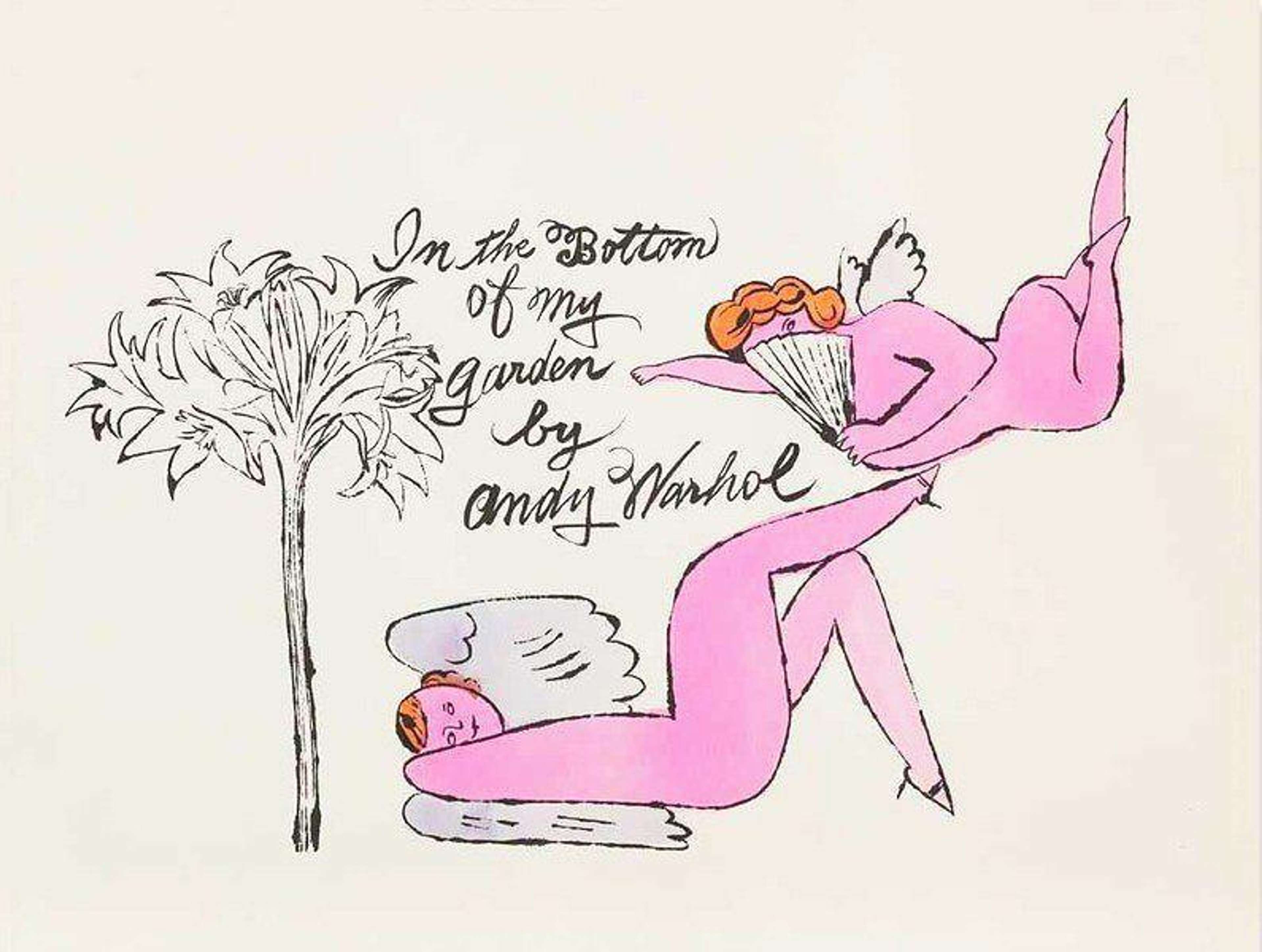
In The Bottom Of My Garden Cover (F. & S. IV.86)

In The Bottom Of My Garden Cover (F. & S. IV.86)
Unsigned Print
Andy Warhol
Price data unavailable
There aren't enough data points on this work for a comprehensive result. Please speak to a specialist by making an enquiry.
22 x 28cm, Lithograph
Auction Results

Track auction value trend
Meaning & Analysis
This lithograph on wove paper is an early print from Andy Warhol’s In The Bottom Of My Garden series (1956) that formed part of a book of the same name, comprising of 22 pages. This print shows the front cover of the book that is said to have been inspired by Cicely Mary Barker’s children’s book Flower Fairies of Autumn and the narrative song There are Fairies in the Bottom of Our GardenT by Rose Flyeman and Liza Lehmann.
Warhol’s print shows two androgynous putti next to some flowers and cursive text with the title of the book forming the centre of the image. Whimsical in character, the image appears to be hand drawn and the putti figures are coloured by hand with pink watercolour. In working with a limited palette of six vibrant watercolours and leaving parts of the image without colour, Warhol conveys the sense of simplicity that can be found in fictional children’s books.
In The Bottom Of My Garden is indicative of Warhol’s early illustrative style before he rose to stardom within the Pop Art Movement of the 1960s and 70s. This print combines his blotted line technique that he learned whilst training as a commercial artist, with cursive lettering and theatrical subject matter that on closer inspection alludes to the overtly sexual. Notably in one plate, a putti-like fairy holds a cat with the provocative line ‘Do you see my pussy?’ written in cursive lettering to the bottom right of the image.